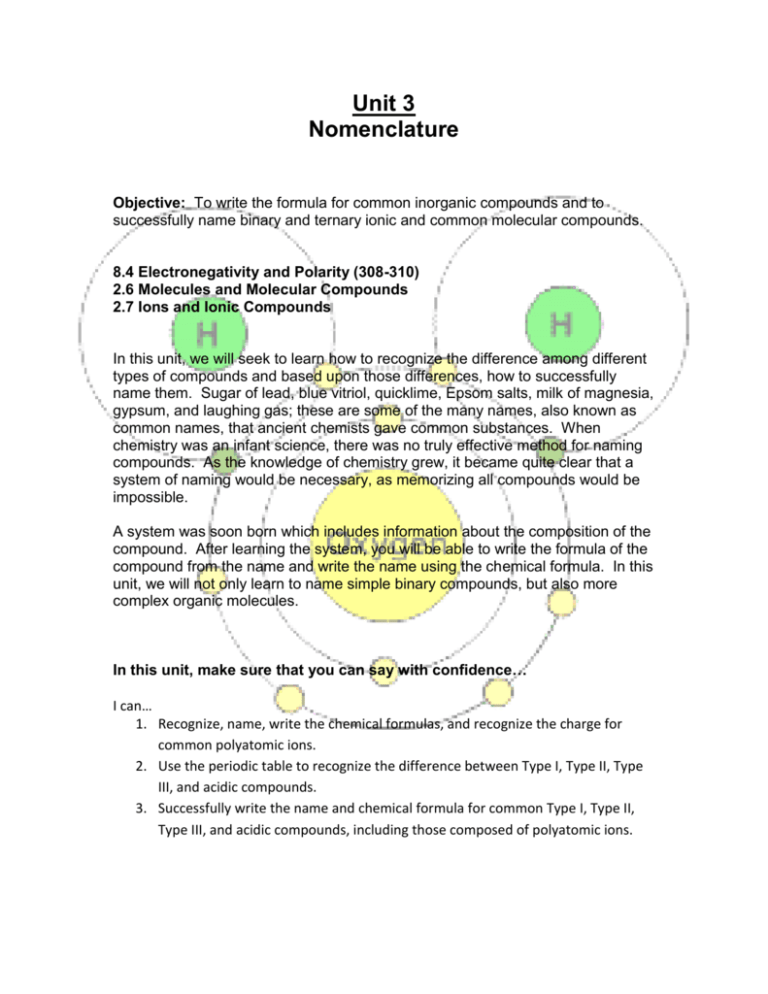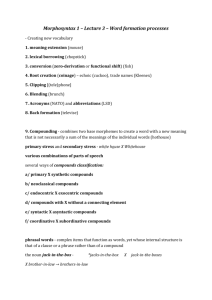Unit 3 Overview
advertisement

Unit 3 Nomenclature Objective: To write the formula for common inorganic compounds and to successfully name binary and ternary ionic and common molecular compounds. 8.4 Electronegativity and Polarity (308-310) 2.6 Molecules and Molecular Compounds 2.7 Ions and Ionic Compounds In this unit, we will seek to learn how to recognize the difference among different types of compounds and based upon those differences, how to successfully name them. Sugar of lead, blue vitriol, quicklime, Epsom salts, milk of magnesia, gypsum, and laughing gas; these are some of the many names, also known as common names, that ancient chemists gave common substances. When chemistry was an infant science, there was no truly effective method for naming compounds. As the knowledge of chemistry grew, it became quite clear that a system of naming would be necessary, as memorizing all compounds would be impossible. A system was soon born which includes information about the composition of the compound. After learning the system, you will be able to write the formula of the compound from the name and write the name using the chemical formula. In this unit, we will not only learn to name simple binary compounds, but also more complex organic molecules. In this unit, make sure that you can say with confidence… I can… 1. Recognize, name, write the chemical formulas, and recognize the charge for common polyatomic ions. 2. Use the periodic table to recognize the difference between Type I, Type II, Type III, and acidic compounds. 3. Successfully write the name and chemical formula for common Type I, Type II, Type III, and acidic compounds, including those composed of polyatomic ions.





